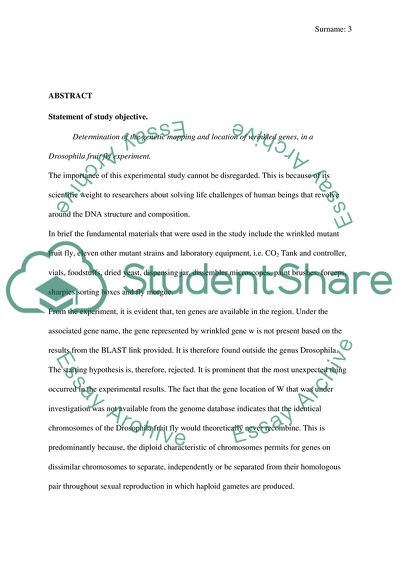Cite this document
(Genetic - Mapping of a Gene Causing a Drosophila Mutant Phenotype Lab Report Example | Topics and Well Written Essays - 2750 words, n.d.)
Genetic - Mapping of a Gene Causing a Drosophila Mutant Phenotype Lab Report Example | Topics and Well Written Essays - 2750 words. https://studentshare.org/biology/1846746-genetics-genetic-mapping-of-a-gene-causing-a-drosophila-mutant-phenotype
Genetic - Mapping of a Gene Causing a Drosophila Mutant Phenotype Lab Report Example | Topics and Well Written Essays - 2750 words. https://studentshare.org/biology/1846746-genetics-genetic-mapping-of-a-gene-causing-a-drosophila-mutant-phenotype
(Genetic - Mapping of a Gene Causing a Drosophila Mutant Phenotype Lab Report Example | Topics and Well Written Essays - 2750 Words)
Genetic - Mapping of a Gene Causing a Drosophila Mutant Phenotype Lab Report Example | Topics and Well Written Essays - 2750 Words. https://studentshare.org/biology/1846746-genetics-genetic-mapping-of-a-gene-causing-a-drosophila-mutant-phenotype.
Genetic - Mapping of a Gene Causing a Drosophila Mutant Phenotype Lab Report Example | Topics and Well Written Essays - 2750 Words. https://studentshare.org/biology/1846746-genetics-genetic-mapping-of-a-gene-causing-a-drosophila-mutant-phenotype.
“Genetic - Mapping of a Gene Causing a Drosophila Mutant Phenotype Lab Report Example | Topics and Well Written Essays - 2750 Words”. https://studentshare.org/biology/1846746-genetics-genetic-mapping-of-a-gene-causing-a-drosophila-mutant-phenotype.


